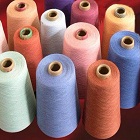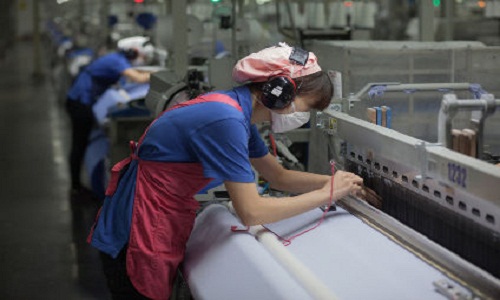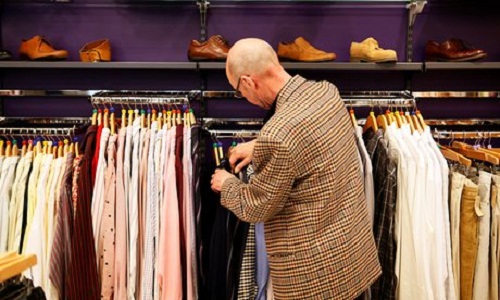FW
Gap Inc is looking at emerging economies for growth as it struggles to arrest the decline in comparable sales and faces intense competition from fast fashion brands in the domestic market. A year after it entered the Indian market, the company will now sell its products online in the country, exclusively on Arvind Group’s fashion portal NNNow.com.
E-commerce in India is growing at a fast pace and tier II and tier III cities in the country are contributing significantly towards this growth. Most foreign brands do not have stores in these cities and the online channel is the only way for consumers to acquire these brands.
With growing disposable incomes of the semi-urban population in India, demand for foreign fashion products is increasing. The online foray will give Gap an edge over other foreign retailers such as H&M and Zara in India and allow it to tap into the growth outside of metro and tier I cities in the region. This strategy should drive overall growth for Gap in the region making it a revenue driver in the long term. With competitors such as Zara and H&M focusing on store expansion, Gap’s strategy to foray into the Indian online retail market can give it a competitive edge.
According to a report by Edelweiss Broking, the branded garment’s segment in India will grow to 48 per cent in 2019 of the overall ready-made garments market in the country from the 35 per cent level of 2014. The Indian branded apparel industry is estimated to be $10 billion in size and growing at 10-12 per cent rate per annum according to the report.
In a way, cotton farmers agree that it’s everyone’s right to grow the crop the way they wish but those that have chosen to grow organic product are looking for better ways to co-exist with those that haven’t. In a talk at Textile Exchange’s Organic Cotton Roundtable in Hamburg, Germany, farmers, breeders and those in organizations representing farmers and breeders came up with their views on the challenges of co-existence of organic and GM cotton.
Michael Sligh, Program Director for the Rural Advancement Foundation International (RAFI), who has been farming organically on a large scale since the 1970s, said the current cotton environment isn’t one of co-existence. He said organic cotton community is doing everything one knows to protect the farming community from unwanted pesticides and GMO drift.
Organic cotton farmers do everything they can to avoid the scenario, but sometimes nature prevails and what would have been organic cotton, as it was farmed as such, has to get turned back over to the conventional market and not bring in a premium. Last year, the organisation lost 22 per cent of its organic cotton product because of contamination. And while that translates to a hit on the bottom lines, the industry must have felt it harder to put up a face to the small farmers.
Sri Lanka’s Brandix Group, has emerged top rankig exporter and the largest employer in the country’s export sector, and was adjudged the sole winner of the 2016 ‘HR Awards for HR Excellence in South Asia’ (excluding India). The award was presented by the Society for Human Resource Management (SHRM). The awards ceremony recently.
The award in the international category, is the only one awarded to organizations the whole of South Asia recognises outside India that have successfully designed and implemented excellent people management practices and systems in human resources. The award, accompanied by a Certificate of Achievement for ‘Excellence in HR, South Asia’ was accepted on behalf of the Group by Ishan Dantanarayana, Chief People Officer at Brandix.
The award presented to Brandix evaluates multiple facets of the Group’s HR practices across a wide array of functionalities. Ranked the highest employment provider in Sri Lanka’s export industry from 2012 up to the latest awards presented by the Export Development Board (EDB), Brandix received the Gold award and the award for Best HR Practices in the ‘Leadership and Key Talent Management’ category at the last National HRM Awards held in 2014. In 2012 too, the Group won Gold at the National HRM awards.
The Brandix Group’s approach to human resources management has also received worldwide attention through the best-selling book ‘Work Rules!’ (insights from Inside Google) by Laszlo Bock, Senior Vice President of People Operations at Google Inc., USA. In it, the author describes how the Brandix Group inspires a large female workforce by telling employees to ‘come as you are and harness your full potential’ and lists some of the employee development and welfare initiatives implemented by the Group.
The suspension of gas transmission because of a leak in the pipeline at Elenga in Tangail district, production of hundreds of textile and garments factories has come to a standstill in Konabari and Gazipur Industrial area for the last one week. Exporters are finding it tough to dispatch products overseas on time. They might also have to resort to expensive air shipments to meet the deadline. They might even have to offer discounts if they miss the deadline.
Factories at Konabari, Shafipur, Rajendrapur, Kashimpur, Mouchak, Mirzapur, Gazipur, Ashulia, Savar and Kaliakoir areas are the worst hit. More than 1,200 textile and garment factories have either suspended production or are running with electricity. They recently met the prime minister to express their concern and expressed concern to the energy minister as factory owners have been suffering for the last one week. They want an immediate solution as owners will face difficulties in timely shipment of goods as production halts. The situation at the spinning mills is the worst as the spinning, dyeing and washing plants require continuous supply of gas with adequate pressure.
This year, Australian cotton crop is expected to be about four million bales as the planting season starts to move into full swing. Wet weather is a large reason the crop would be so successful. Across the cotton belt, good winter rains have seen the major storage dams fill up. More rain in early to mid-November when the soil temperature would be a lot warmer would be beneficial to cotton producers. So there is great enthusiasm and interest in cotton production.
Cotton industry in Australia is more modern than it used to be and farming as a whole is done with latest technologies, such as autonomous tractors and even robots. Yields in cotton in Australia are the highest in the world. Cotton Australia is using this success to kick start a new program that will see young people try out the industry.
The program will provide an opportunity to connect school leavers with cotton enterprises seeking operational staff. It would suit two groups of students - those seeking 12 months of employment in a unique rural and regional location and those seeking practical experience relevant to their future studies and a career in agriculture. Participants will be supported by the cotton industry to make sure they are job ready.
Bangladesh's readymade garment (RMG) accessories sector is now seeing a sound growth globally for its competitive price and standard. Global buyers are attracted by Bangladesh companies for their spirited prices, global standards and improvements in workplace environment. The sector is growing 10 to 15 per cent on a year-on-year basis for the last 10 years. Local businesses fetched export worth $ 3.5 billion in the last financial year (FY'16) a 25 per cent growth compared to FY'15.
President of Bangladesh Garments Accessories and Packaging Manufacturers and Exporters Association (BGAPMEA) Abdul Kader Khan says for better quality and competitive price, many buyers are shifting to Bangladesh from China, India and other countries. Hence, demand for local garment accessories is growing in the international market. Meanwhile, the BGAPMEA has set a target of exporting apparel accessories and packaging products worth $4 billion billion in FY'17.
Proprietor of Zerin Tex, suppliers of fabrics, yarn and accessories Juber Alam says currently more than 96 per cent demand for garment accessories is being met from local production and the rest 5 per cent is being imported. Plastic accessories being manufactured locally are corrugated cartons, poly bags, buttons, zippers, and labels etc which are an integral part of RMG export.
"The yarn market across the globe has witnessed some significant changes in recent times mainly due to China’s declining cotton yarn import. The narrowing price parity between domestic yarn and imported yarn has contributed majorly for the reduced cotton yarn import in China."

The yarn market across the globe has witnessed some significant changes in recent times mainly due to China’s declining cotton yarn import. The narrowing price parity between domestic yarn and imported yarn has contributed majorly for the reduced cotton yarn import in China.
World feels the heat for China’s declining import
Clearly, there has been a mixed impact on the global supply scenario due to China’s declining numbers. The impact on the global supply scenario in short term, reveals demand for imported yarn to slow down owing to worldwide sluggish market conditions and increasing cotton prices. However in the long term, chances are there that China may become a self sufficient country as far as yarn supply is concerned, whereas there still will be scope for certain varieties of fabrics as China is moving towards value added products.

“Indian yarn manufacturers to sustain have already started working on adopting two pronged strategy, increase investments in downstream industry so as to increase yarn consumption in the domestic market in addition to diversification of market mix so as to decrease dependence on Chinese market” says N. Ravindranathan, Director, TEXPROCIL
India’s and Pakistan’s loss is Vietnam’s gain
In recent times Vietnam has emerged as a strong market increasing its market share in the global scene and Chinese weavers and knitter are increasingly souring from Vietnam due to narrowing price parity. While India and Pakistan are losing market share in China, Vietnam is gaining market share boosted by the fast developing spinning sector to Xinjiang. In spite of India being the most competitive country for cotton yarn in the world, there is imports duty on Indian yarn while Vietnam and Indonesia are duty free.” This of course forces the garment industry to pay more for yarn, and makes other countries like Bangladesh, India more competitive where they get access to the best and cheapest possible yarn from across the world.” says Sanjay Jain, Managing Director, TT Ltd and President NITMA.
“Even though there is a steep increase in import of yarn from Vietnam in recent months, but it is to be seen if the quality concern has been resolved. There have been reports by importers that as far as quality is concerned, Indian yarn is much better than supply from Vietnam. Moreover if TPP kicks in, Vietnam will need all the home spun yarn for their domestic captive consumption. Apart from this, Xinjiang autonomous region is planning to add 18 million new spindles by the end of 2020, which is likely to result in drastic decline in yarn import into China. In view of these factors, Indian manufacturers and suppliers are working on suitable strategy to consolidate spinning sector and increase yarn consumption in downstream textile value chain in India” avers Jain.
Rising concern to force India to rework on its strategy
The recent volatility is going to be a major concern, believe most industry experts. For Cotton based markets like India, however the worry remains that cotton fibre would gradually lose more ground to man- made fibres which are relatively stable. “In short term, Indian spinners have been forced to cut production to match the demand and supply situation. The disparity of cotton and yarn this time has been the highest ever – spinners are facing huge losses. In July exports of yarn from India to China fell by 75% - such severe disruption will of course create a lot of pain to the Indian industry. However this shrunken supply, will create sudden pressure on availability when peak season starts from November. ”explains Jain.
Further experts believe that for India to retain its position, tariff barriers need to be broken down in order to set up an efficient global supply chain. By discriminating on import tariff of yarn and fabric from India against other nations like Vietnam, Korea, Indonesia and Pakistan it is the end consumer who is losing out and being put at a disadvantage.
"As the battle between e commerce marketplaces and traditional fashion retailing continues, a recent layoff at one of the biggest fashion brands comes as a major blow. The layoff at Los Angeles based fashion label which is known for superb fabric, cutting-edge styles and trendsetting ways once again indicated the changed mindset of the millennial consumers and the tough competition that fast fashion retailers are facing from the popular ecommerce portals."

As the battle between e commerce marketplaces and traditional fashion retailing continues, a recent layoff at one of the biggest fashion brands comes as a major blow. The layoff at Los Angeles based fashion label which is known for superb fabric, cutting-edge styles and trendsetting ways once again indicated the changed mindset of the millennial consumers and the tough competition that fast fashion retailers are facing from the popular ecommerce portals.

The category which has been hit hard by this raging war is premium denim wear where private-equity firms and investment groups in recent years bought out the established labels like True Religion, J Brand, 7 For All Mankind, Joe’s Jeans and Hudson Jeans. As per report revealed by Fitch Ratings True Religion, acquired in 2013 by Tower Brook Capital Partners for $824 million, is in high risk of going bankrupt the company’s revenues are down to $408 million after coming in at $420 million and its institutional term loans amount to $485 million.Explaining the reason behind Andreas Kurz, a former chief executive of 7 For All Mankind and now President of Akari Enterprises says “The premium-denim market has contracted. People are working with an old recipe where they import Italian or Japanese fabric to Los Angeles, make it in Los Angeles and try to sell a jean for $200 to $250. That doesn’t work anymore. Consumers are more price-conscious.”
New tech based retail practices causing revenue loss for traditional retail
Technology and internet based retail practices are changing the age old dynamics of retailing. Moreover, department-store shoppers have been playing with attractive bargains but younger consumers now rather looking for USP of the product. “The consumer is being more frugal and to expect more for less, and that is tough on brands” said Lloyd Greif, president and chief executive of Greif & Co., a downtown Los Angeles investment banking firm. Three Los Angeles labels hard hit recently are 7 For All Mankind, Splendid and Ella Moss, sold to Israeli company Delta Galil earlier this year for $120 million by VF Corp. However, the change has prompted laying off more than 100 employees of the brand at its headquarters in LA. “This is a clear sign that these brands are in their maturity and are on a downhill slope. Whether Delta Galil turns them around or milks them until there is nothing left is still to be seen.” says Delta Geli.Another denimwear brand struggling is J Brand which has now been acquired by Uniqlo, the parent company of Japanese giant Fast Retailing Co. at $290 million in 2012. The acquisition forced Fast Retailing to take a $145.8 million impairment loss during fiscal 2016.
Apart from Denimwear brands, brands which primarily sell through departmental stores are also downsizing. BCBG Max Azria is laying off 123 people as it tries to come out from under a load of debt that is owned principally by Guggenheim Partners, the company’s major shareholder.
Experts believe, that the concern is not for California only rather this trend is clear across the world. US. specialty stores have been downsizing for the last two years as many go out of business or have low credit ratings, making it difficult for clothing manufacturers to get financing from factors and banks to sell to these retailers.“The same thing that is going on in California is going on in New York,” said Paul Zaffaroni, managing director at Roth Capital Partners. “These are problems that are more of the industry.” However Rob Greenspan, president of Greenspan Consult, says “When business gets bad, the smart business has to do the smart thing to survive,”.
Time to thing long term instead of downsizing for survival
But market experts believe rather than downsizing for survival brands should look into developing long terms strategies based on the new market demnds and practices. “ “We have seen brands come out of nowhere and go from zero to $30 million in sales in two or three years—all online. The old way of opening independent stores and department stores—that model is broken.” adds Zaffaroni.
Also quality products are still in demand. Brands need to fit with the trends in the world at the time and maintain a core position. Quite a few brands in the premium-denim market,so far struggling , are now tweaking their merchandise mix to compete with the athleisure movement. Denim companies are offering denim pants with spandex to make them more comfortable—even making jog jeans that have the feel of a knit but the look of denim.
While product and price are two things most apparel companies are dealing with but digital promotion is proving to be one major hurdle for many brands and retailers.
Falling textile exports have prompted India to tap new markets like the ones being serviced by competitors such as China. In its bid to promote Indian textiles in new markets, the ministry is planning to conduct road shows.
The plan to conduct road shows abroad comes in the wake of a 3.3 per cent decline in exports in 2015-16 to $40 billion from $41.4 billion last year due to India losing its competitive edge to Bangladesh and Vietnam. The textiles sector is among the largest contributors to India’s exports with a share of almost 11 per cent. The US, European Union and parts of Asia are the main markets for Indian textile and apparel exports.
It may be recalled the Central government, had in June, announced a Rs 6,000 crores package for the textiles and apparels sector to help it wrest a bigger share of the global market. Besides pushing exports, road shows abroad will also benefit the domestic textile industry which employs about 40 million workers and 60 million indirectly. The textiles ministry, which has set a target of doubling textile exports in 10 years, plans to enter into bilateral agreements with Africa and Australia along with working on a new textile policy to promote value addition.
Due to a lower demand for readymade garment (RMG) in US and UK, Bangladesh’s export earnings from the two countries fell in the first quarter of the current financial year (2016-17). Export earnings in the July-September period of FY16 from the US, the single largest export destination for Bangladesh, fell by 10 per cent to $1.40 billion from $1.55 billion in the same period of FY15, according to the Export Promotion Bureau data.
RMG export to the US in July-September FY16 fell by 12.04 per cent to $1.26 billion from $1.43 billion in the same period of FY15. Export to the UK, the third largest destination, declined by 2.47 per cent to $843.78 million in the first quarter of FY16 compared to $867.60 million in the same period of FY15. RMG export to the UK in the first quarter of FY16 decreased by 2.23 per cent to $780.52 million from $798.37 million in the same period of FY15.
Experts say shipment suspension during long holidays for Eid-ul-Fitr and Eid-ul-Azha, two biggest Muslim religious festivals, and a slump in demand for RMG products in US and UK markets resulted in the negative growth for the Bangladesh’s exports to the markets. A decreased number of shipments due to holidays for two Eid festivals and a five-day strike enforced by trailer operators at Chittagong Port were the major reasons for the negative growth in the UK market.
Export to Italy fell 0.45 per cent to $306.99 million in the July-September period of FY16 from $308.36 million in the same period of FY15. Export earnings from Japan increased by 3.75 per cent while earnings from France in the first quarter of the FY16 grew 5.64 per cent to $384.31 million. Export to China in the July-September period of FY16 grew by 25.72 per cent to $195.93 million.












